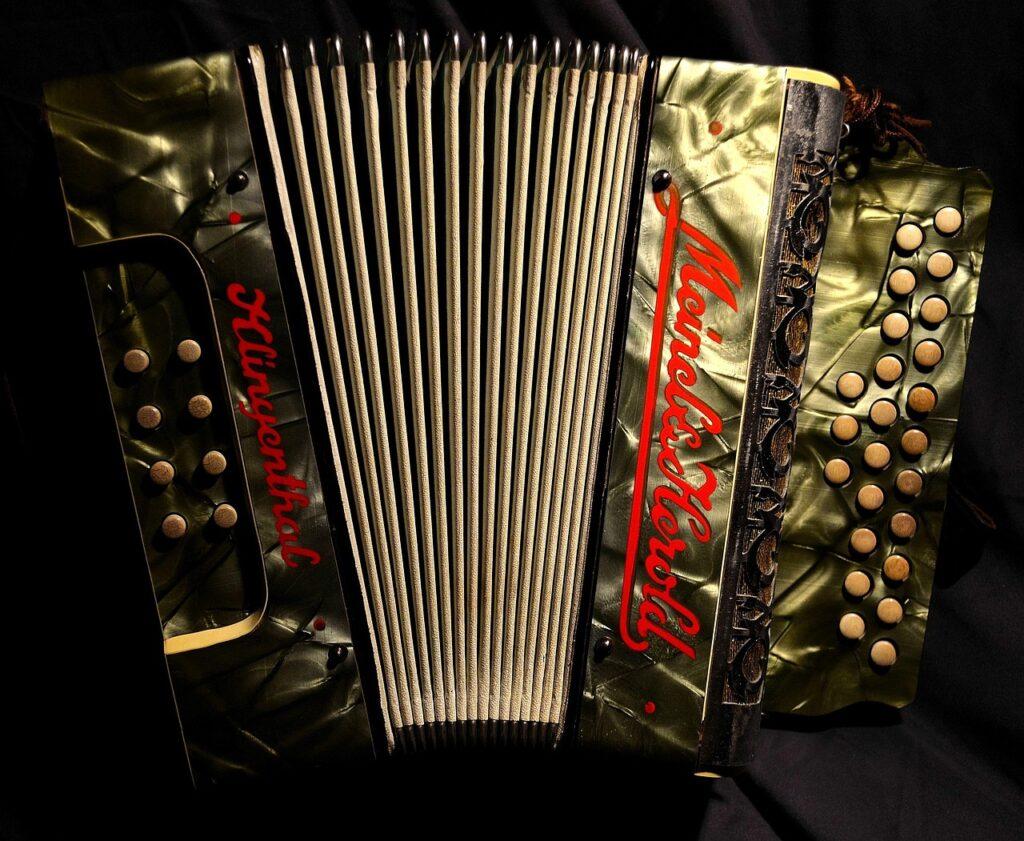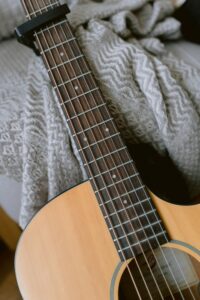Estimated reading time 3 minutes
Table of Contents
Introduction
Do you want to know how easy it is to play accordion? The accordion is a versatile instrument that’s a dominant force in folk and ethnic music around the world. However, the playing difficulty depends on which type of instrument you’re talking about. Keep reading How Easy (or Difficult) Is it to Play Accordion? to learn more.
This article uses musical terms. For definitions, see the Glossary at the end of the post.

How Easy Is it to Play Accordion: What Are Diatonic Buttons?
How easy is it to play accordion? It depends on the type of instrument you’re talking about:
- For instance, I have a diatonic button accordion that my students love.
- Dia-what? Diatonic means that it’s limited to the seven “white key” notes from the piano. (Also, instead of keys it has buttons.)
- This means that none of the note combinations will sound too horrible, making it fairly easy to noodle around on.
In addition, it’s single-action, meaning that when you change directions on the bellows you get different notes:
…the earliest ones, are “single-action,” in which the paired reeds sound adjacent notes of the diatonic (seven-note) scale, so that a button will give, for instance, G on the press and A on the draw. (Britannica)
This makes press and draw bellows phrasing more challenging. However, on the plus side, these instruments are lighter and easier to handle.
Even among diatonic button accordions, there’s going to be a range of difficulty:
- For example, one instrument I have at my lesson studio is from the Schylling Kid series, and my young students have a ball improvising on it. Why is it good for kids? Because it has small buttonboards with less buttons for both right and left hands.
- Obviously, a serious adult diatonic button accordion will have more buttons and therefore will be more challenging to play than the kid’s version.
- Nevertheless, the adult version of the instrument will still be a good option for people who love the sound of the instrument, but don’t want too much complexity.

How Difficult Is it to Play Accordion: What Is a Chromatic Piano Accordion?
The piano accordion is a much more complex instrument than the diatonic button version:
- The “piano” moniker comes from the fact that this type of instrument has a piano style keyboard for the right hand instead of a buttonboard.
- However, the left hand usually uses a buttonboard.
- Depending on the buttonboard system, the left hand will be able to play a combination of bass notes and/or chords.
Also, it’s much larger and heavier, because it’s double-action:
In “double-action” accordions, the two reeds of each pair are tuned to the same note, thus making each treble or bass note available from the same key or button with both directions of bellows movement. (Britannica)
Having twice the number of reeds accounts for its larger size and for the bulk of the extra weight. This makes it a handful to play.
In addition, the piano style right hand keyboard is chromatic:
- Chromatic means that it has twelve keys (seven white and five black) per octave, allowing you to play a larger repertoire with a greater range of musical styles.
- The downside is that it makes for a much steeper learning curve for beginners.
- However, if you have a piano background, it’ll give you a boost toward mastering the right hand. On the other hand (pun intended), the bass buttons for the left hand take some getting used to.
There are other variations of these instruments. However, this gives you some of the basics to consider when choosing which way you want to go.

Final Thoughts on “How Easy (or Difficult) Is it to Play Accordion?”
Takeaway points:
- The diatonic button accordion is a good option for people who love the sound of the instrument, but don’t want too much complexity.
- Also, it’s lighter and easier to handle.
- Conversely, the piano accordion is much more complex but is also a much more versatile instrument.
Have fun playing!
Related Posts
- Basic Arpeggios Explained in Less Than 3 Minutes
- Reading Music (A Quick Guide to How to Read Music)
- D’you Want Some Music Tips and Tricks I’ve Learned Over the Years?
© 2025 Geoffrey Keith
Glossary
7 Songwriting Templates to Get Your Ideas Flowing
Are you stuck on how to begin writing your song? Have you been staring at a blank page and need help with structuring your song? You've come to the right place! Read on to learn more about 7 songwriting templates to get your ideas flowing. Estimated reading time 3 minutes.
Read MoreI’m Having a Hard Time Keeping a Steady Beat
“I’m having a hard time keeping a steady beat.” One of the best things you can do is get a teacher who can help you learn how to keep a steady beat. Also, I have specific strategies that you can use with or without a teacher. Keep reading to learn how it works. Estimated reading time 2 minutes.
Read MoreCan Somebody Explain Why Power Chords Sound Powerful?
Power chords are an integral part of rock music’s electric guitar sound. However, you only get that exact sound when you use power chords with distortion. Why? Because a distorted electric guitar doesn’t sound quite as good with full major and minor harmonies. Why? Keep reading “Can Somebody Explain Why Power Chords Sound Powerful?” to learn why these powerful little two and three note harmonies work. Estimated reading time 2 minutes.
Read MoreSinging Shape Note Solfege Aeolian Melodies
Do you want to sing Eastern European folk melodies and mediaeval chants? Are you puzzled about how the aeolian mode works? Modes have been a feature of music from ancient times to today. Singing Shape Note Solfege Aeolian Melodies lets you explore the exotic sound of the aeolian mode. Estimated reading time 2 minutes.
Read More



